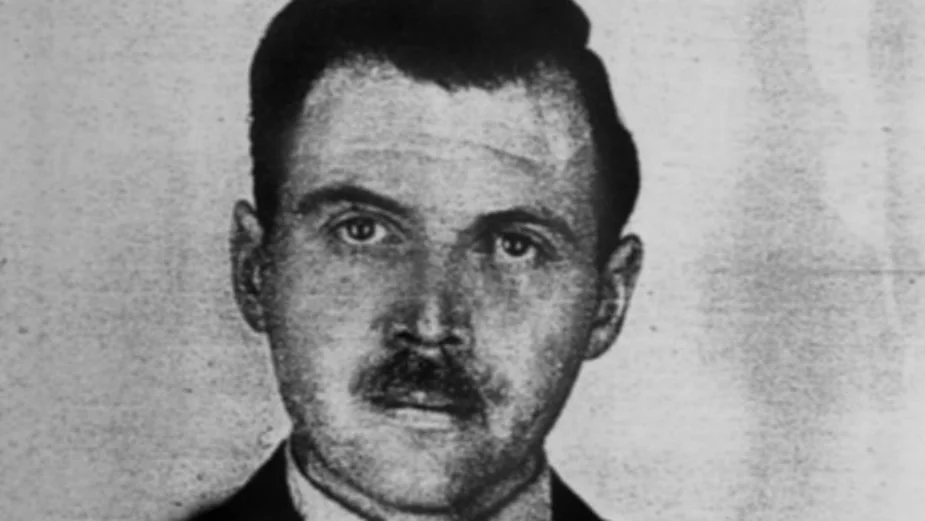
Police File Reveals New Details about Mengele, One of the Cruelest Nazi Criminals
Josef Mengele, one of the most brutal Nazi war criminals, lived freely in South America for decades. A police file, previously considered lost, reveals how he managed to evade justice.
Investigative journalists from Germany’s public broadcaster MDR Investigativ discovered a police file on Nazi criminal Josef Mengele, previously thought to be lost.
The documents, which apparently originate from the archives of the Argentine Federal Police, contain sensitive information about Mengele’s whereabouts after World War II – and add to our current knowledge of his escape and the international manhunt for him. According to MDR Investigativ, the file disappeared from the archive in 2002.
The documents show that Josef Mengele planned to enter Germany in February 1959. The file also contains a corresponding request submitted to Argentine authorities – previously unknown.
Renowned historian and Nazi-era expert Bogdan Musial thoroughly reviewed copies of the file and confirmed their authenticity.
"This file expands our existing knowledge. It shows that some countries clearly had more detailed information than previously assumed."
Mengele Wanted to Travel to Germany in 1959 – Whether He Did Remains Unclear
"It is interesting that in February 1959 he applied to travel to West Germany under his real name. We knew about the rumors, and we know his father was ill at the time. This matches. And now we have confirmation that he genuinely intended to come as Josef Mengele. That shows he felt secure. He said – my identity is real, I feel safe, and I’m even going to Germany to visit my father."
Until now, only unconfirmed testimonies existed, says Musial for MDR Investigativ.
Asked whether Mengele actually returned to Germany, the German Foreign Ministry told MDR Investigativ it "has no information indicating that Josef Mengele actually traveled to the Federal Republic of Germany."
Mengele at Auschwitz – Selections and Brutal Experiments
World War II ended 80 years ago, on May 8, in Europe. It also marked the end of the Holocaust – the murder of six million Jews. At the heart of this genocide was the Auschwitz-Birkenau camp, where over a million people were killed. Josef Mengele "worked as a doctor" in this concentration camp.
Mengele was in charge of selection – meaning he chose among the prisoners who would be allowed to work or be used for his brutal medical experiments and who would be allowed to live. The others were immediately murdered in gas chambers.
In early 1945, Auschwitz was liberated by the Red Army.
Soon afterward, Mengele disappeared. As early as May 1945, the Allies issued a warrant for his arrest for mass murder.
Many Nazi Criminals Lived in South America after the War
Like many other Nazi criminals, he took advantage of the post-war chaos and fled to Argentina in 1949.
Numerous Nazi criminals escaped to South America. Argentina – like many Western countries – early on focused on the fight against communism. Nazis were then seen as welcome allies.
"All then-Western governments were accepting German scientists. So did Argentina," says Ariel Gelblung of the "Simon Wiesenthal Center" in Buenos Aires. His organization searches for Nazi criminals worldwide.
To this day, it is not known whether Mengele did actual scientific work in Argentina. He was financially supported by his wealthy family. He lived comfortably, in a villa in one of Buenos Aires’ best neighborhoods. There was no obvious reason for him to flee.
Who Tipped Mengele off in Argentina?
However, in the late 1950s, Mengele allegedly received word that someone was closing in on him. He was part of a network of former Nazis who helped one another. While he hid in Paraguay in 1959, Adolf Eichmann – one of the main organizers of the Holocaust – stayed in Buenos Aires.
That proved fatal for Eichmann. The Israeli secret service Mossad tracked him down, abducted him, and took him to Israel, where he was sentenced to death and executed.
Josef Mengele, unlike Eichmann, continued to live freely – first in Paraguay, then in Brazil.
The MDR Investigativ editorial team gained access to the documents through a collector and managed to photograph them.
"These documents come from the Argentine police archive. They contain the actual sequence of events – with accurate facts and dates," says the collector, who wishes to remain anonymous.
According to MDR Investigativ, the file has been missing for over 20 years. Why was it hidden for so long? According to Professor Daniel Feierstein from the Center for Genocide Studies in Buenos Aires, the police were trying to protect themselves.
"Before Eichmann was abducted, Germany sent information to Argentina for the first time and requested the extradition of Josef Mengele." But when Argentine security forces arrived, Mengele had already fled.
"He was warned even twice," says Feierstein. It is suspected that the tip-offs came from within the police itself. An internal investigation was launched. "That internal investigation was secret and removed from official records."
The German Government’s Stance on Mengele
According to MDR Investigativ, no copies of the discovered police file exist in any archives in Buenos Aires. However, identical passages appear in other documents – confirming its authenticity.
Documents from the German Foreign Ministry show that Germany only submitted an extradition request to Argentina for Mengele at the end of 1959. Three years earlier, Mengele had applied for a passport under his real name at the German embassy.
The Argentine police clearly knew where Mengele was. The file also shows that by January 1960, Argentine police had been informed that Mengele had fled to Paraguay.
"It’s interesting that Argentina knew where he was. I didn’t know that either," says historian Musial.
That same year, Mengele fled further – to Brazil. The file shows that from 1963, Brazilian police were requesting all available information about Mengele from Argentine authorities – including fingerprints and photographs. This indicates that the police had concrete suspicions that Mengele was on Brazilian territory.
What did German authorities know at the time? The foreign intelligence service BND cooperated with Mengele’s helpers – and to this day only allows limited access to documents.
When asked by MDR Investigativ, BND replied: "Access to files about (…) war criminals and individuals accused of Nazi crimes in South America has already been granted to researchers and journalists. It cannot be predicted in advance when specific documents will be made available to the public (...)."
Critics still accuse the German state of doing very little to expose its connections with Nazi criminals – or even of total failure.
Historian Musial disagrees: "To fail would imply that the state genuinely wanted to prosecute them. In the case of Mengele, it is clear that there was no such will." Therefore, he argues, the state did not fail. "On the contrary – it was successful. Because its real goal was: not to prosecute."
Mengele lived under a false name in Brazil until his death in 1979. His grave was discovered in 1985.
This newly uncovered police file raises new questions – about the complicity of Argentina, Brazil, and Germany and their handling of one of the most brutal Nazi war criminals.





